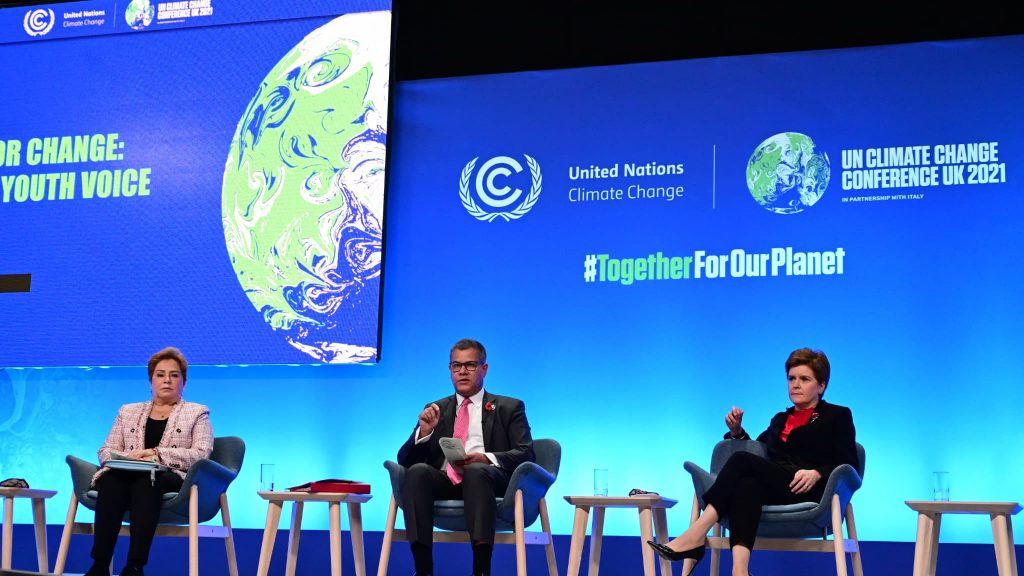
What are the implications of the new promises of COP26?
It’s hard to tell at the moment, but if they were respected, they could, in some cases, make it possible to keep global warming below 2°C.
The first week of COP26 saw a series of announcements from countries promising to do more to reduce greenhouse gas emissions, but it is difficult at this point to assess their impact on future warming. The Paris Agreement aims to limit warming to well below +2°C compared to the pre-industrial era, if possible +1.5°C.
But commitments to cut greenhouse gas emissions for 2030 are on the table before COP26 kicks in has led the planet toward a “catastrophic” path of +2.7°C, or +2.2°C given the promise of carbon neutrality for the middle. of the century, according to the annual standard report United Nations Environment Program (UNEP).
New commitments made
Since then, during the COP, India, Brazil, and Argentina have announced strengthening their short-term goals, and India has set itself carbon neutrality for 2070. Nearly a hundred countries have also committed to reducing methane emissions by 30% by 2030, a greenhouse gas stronger than carbon dioxide.
Ads and others can have a significant impact on the course of warming, as every tenth of a degree more brings its share of more devastating disasters.
On Thursday, the UN Climate Action released a preliminary analysis of the new commitments. Taking into account all officially filed “Nationally Determined Contributions” (NDCs), revised or not, greenhouse gas emissions should increase by 13.7% in 2030 compared to 2010, which is slightly better than the 16% of the previous assessment at the end of October . However, it should be reduced by 45% in the hope of limiting the warming to + 1.5 ° C.
This analysis does not address the effects of these modified emissions on temperature. Nor did the standard annual report of the United Nations Environment Program (UNEP) adjust its forecasts at this stage.
Heating is limited to + 1.9 ° C?
“It’s too early,” its boss, Inger Andersen, told AFP on Friday, noting that it was necessary to study the details of the announcements first. “We don’t do the calculations on the back of an envelope,” she emphasized, stressing that their estimates are based on science, with calculations and models taking time.
According to an assessment by the University of Melbourne, “For the first time in history, the total impact of 194 country commitments could limit temperature rise to below +2°C,” but with a “50 percent probability.”
These scientists, who include short-term goals for 2030 and commitments to carbon neutrality for the middle of the century, estimate that if all promises are kept, warming could be limited to +1.9 degrees Celsius.
Fatih Birol, head of the International Energy Agency (IEA) confirmed Thursday that his teams’ analyzes – which have not yet been published – showed that if all promises made at the COP were fulfilled, warming would be limited to +1,8 degrees Celsius. . He welcomed the prospect, however, and emphasized that the path relied heavily on rapid emissions cuts and then achieving carbon neutrality.
Some countries will disappear from the map.
He stressed that “it is necessary for governments today to transform their promises into clear and credible policies and strategies.”
Even if the most favorable assessment of the head of the International Energy Agency is confirmed, NGOs assert that the + 1.5 ° C ceiling, which has in fact become the main goal to avoid the worst effects of climate change, will be exceeded.
Juan Pablo Osorneo of Greenpeace commented, “If we get to +1.5°C, some countries will disappear from the map. So the takeaway from these calculations is that we need not just words, we need actions.” US Special Climate Envoy John Kerry insisted at a news conference Friday that “there is still work to be done.”

“Organizer. Social media geek. General communicator. Bacon scholar. Proud pop culture trailblazer.”
